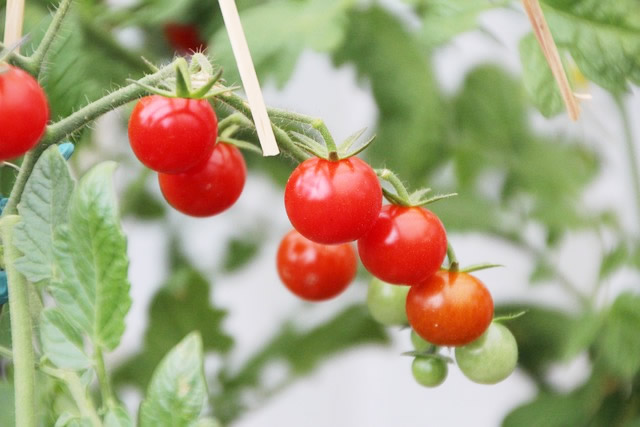先日から「The complex climate truth about home-grown tomatoes -「自家製トマトにまつわる気候の真実」を読んでいます。

・「自家製トマトにまつわる気候の真実」(1)
・「自家製トマトにまつわる気候の真実」(2)
・「自家製トマトにまつわる気候の真実」(3)
・「自家製トマトにまつわる気候の真実」(4)
The wider context to all of this is that roughly 5% of global greenhouse gas emissions come from the commercial production of crops grown for human consumption.
こうした背景から、世界の温室効果ガス排出量のおよそ5%は、人間が消費するために栽培される作物の商業生産によるものと分かる。
Emissions from small-scale urban growers is almost certainly a tiny fraction of that – though they would also produce a far smaller total volume of food.
都市部の小規模農家の食料総生産量は、それよりはるかに少ないものの、排出量はその一部であることは間違いない。
Hawes confirms that his and his colleagues’ study did not consider the carbon footprint of a customer driving to a shop to buy fresh produce,
ホーズは、彼と彼の同僚の研究は、顧客が生鮮食品を買うために店まで車で行く場合の二酸化炭素排出量や
nor the packaging that might be used for some fruit and veg in a retail environment.
小売環境で青果物に使用されそうな包装等は考慮していない。
However, a generic value for emissions associated with supermarkets was included.
ただしスーパーマーケットに関連する排出量については、一般的な値を含んでいる。
Hawes emphasises that the lowest carbon-intensities in the study were associated with a handful of highly sustainable urban agriculture sites
彼は、この調査で最も炭素排出量が少なかったのは、ごく一部の持続可能な都市農業の現場であり
and that this part of the analysis reveals that, by recycling materials for garden infrastructure, using the same equipment for many years, and avoiding synthetic fertilisers, it is possible to grow your own veg and have an extremely low carbon footprint.
この分析から、庭のインフラに使う資材をリサイクルし、同じ設備を長年使い続け、化学合成肥料を使用しないことで、自家栽培でも炭素排出量を極めて低く抑えることが可能であることが明らかになったと強調する。
何ていうか「まあそうだろうな」と思う事を、ちゃんと研究して科学的に検証している方々のおかげで、人間の文明って進化してきたんだな、と思いました。
家庭菜園で使う資材は、なるべく長く使おうと工夫する方が多いでしょうし、自然にあるもの(雑草、枝、落ち葉など)を活用することもあるので、その分商業的な農業よりも環境には優しいのでは?という気がしています。
手間はかかるので、コスパとかタイパ?という点で有利かどうかは分かりませんが、地球をいじめるような栽培は、なるべくしたくないと、皆さん考えているように思います。
理由は単純明快!「少ないコストでしっかり楽しく学べるから」。
私自身の経験(高機能でビックリ)をびっしり書いていますので、良かったら読んでみてください。
下のバナーからどうぞ!






